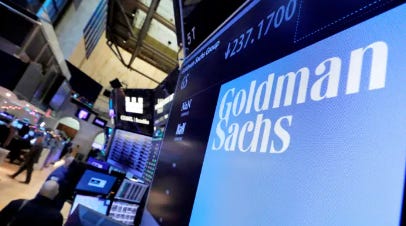Generative AI: Why is Goldman Sachs not so impressed now?
A skeptical look at AI investment and this big, new 'pie in the sky'!
Generative AI is touted as one of the most transformative innovations in history. In the coming years, companies are expected to spend over $1 trillion on AI-related technology.
While the potential benefits are substantial, questions remain about whether AI can deliver on these promises.
Big ideas from Goldman Sach’s recent take on Generative AI's transformative potential (or not).
Generative AI is seen as a major driver of market optimism, with predictions that it could automate up to 25% of work tasks, boosting productivity by 9% and GDP growth by 6.1% over the next decade. However, significant challenges remain in realizing these gains, particularly in the cost-effectiveness of AI applications.
Skepticism about AI's short-term impact
Despite the hype, experts like Daron Acemoglu argue that AI's short-term impact on productivity will be limited.
Only a small fraction of tasks will be cost-effectively automated in the next ten years, resulting in a modest productivity boost of about 0.5% and GDP growth of 1%.
"Generative AI is being heralded as one of the most transformative innovations in human history, but we're a couple of years in, and there's not a single thing that this is being used for that's cost-effective at this point."
The importance of economic theory in AI predictions
Economic theory helps to temper overly optimistic predictions about AI's impact. It suggests that while AI can transform certain tasks, many human activities are too complex for immediate automation. Thus, the transformative effects of AI are likely to be more gradual than some expect.
Challenges in achieving cost-effective AI automation
Achieving cost-effective AI automation is complex.
Factors like the quality and availability of data, the scalability of AI models, and the limitations of current AI architectures pose significant hurdles.
For instance, doubling data or compute capacity doesn't necessarily translate to doubling AI capabilities.
"If you're thinking about the next few years, we know the models. So anything that's invented or big breakthroughs, it's not going to have a huge effect within the next few years."
The role of human cognition in AI development
Current AI models are impressive but still fall short of replicating human cognition, which involves diverse sensory inputs and cognitive processes.
This limitation means that AI, in its current form, is unlikely to achieve super-intelligence or fully autonomous problem-solving capabilities in the near future.
Technological innovations like AI have historically led to the creation of new occupations. However, this is not a guaranteed outcome. The future impact of AI on employment will depend on how it's integrated into existing workflows and whether it leads to the development of new, specialized roles for humans.
Investment in AI: A double-edged sword
The surge in AI investment could drive significant advancements, but it also carries the risk of substantial waste. While some investments will pave the way for future innovations, others may be driven by hype and fail to deliver meaningful returns.
The high cost of AI development Unlike previous technological advancements, AI development is starting from a very high cost base. This raises concerns about whether the technology can become affordable enough to replace low-cost labor and achieve widespread adoption.
Market dynamics and AI affordability The dominance of companies like Nvidia in the AI hardware space keeps costs high. For AI to become more affordable, competition from other chip manufacturers and the development of cost-effective AI hardware solutions will be crucial.
"AI is pie-in-the-sky, big picture, 'if you build it, they will come.' Just you got to trust this because technology always evolves."


